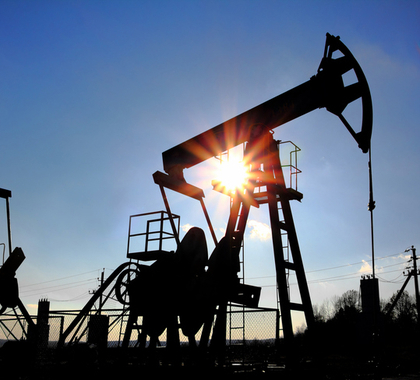A new analysis from LNG Allies, a nonprofit trade group, estimates liquid natural gas (LNG) exporters will add between $716 billion and $1.267 trillion in cumulative “direct, indirect, or induced value added” to the U.S. economy by 2050. Over the same time, the value added to the economy “from supplying natural gas to the liquefaction plants” will be between $948 billion and $1.988 trillion.
Using the U.S. Energy Information Administration’s (EIA) 2018 Annual Energy Outlook (AEO-2018) to review the most likely natural gas production and LNG export scenarios, the analysis, prepared for LNG Allies by the strategic consulting firm ICF, also estimates LNG export terminals will support 50,000–100,000 jobs in 2050. LNG exports will also cause upstream job creation in the natural gas industry to grow by 150,000–300,000 jobs over the same period. From 2013 to 2050, the analysis states, “LNG plants would support 2.0 million to 3.9 million job-years of direct, indirect, and induced labor.”
“Thus, considering the whole value chain,” the analysis concludes, “the cumulative direct, indirect, and induced value added from U.S. LNG exports would range from $1.664 trillion to $3.255 trillion for the three selected AEO-2018 cases over the 2013 to 2050 time frame; and … the direct, indirect, and induced employment benefits from U.S. LNG exports would range from 7.346 to 15.459 million job-years over that same period (an average of 205,403 to 432,897 direct, indirect, and induced jobs per year).”
Since 1990, natural gas production has increased by 50 percent and oil production has increased by 21 percent, according to EIA. This is primarily due to the hydraulic fracturing (or “fracking”) revolution of the past decade. EIA also notes fracking now accounts for 51 percent of all U.S. crude oil production.
This is not the first analysis to find large economic benefits from the fracking revolution. A study published in the American Economic Review in April 2017 found “each million dollars of new [oil and gas] production produces $80,000 in wage income and $132,000 in royalty and business income within a county where drilling is taking place. Within 100 miles, one million dollars of new production generates $257,000 in wages and $286,000 in royalty and business income.”
A July 2017 report prepared by professional-services firm PricewaterhouseCoopers (PwC) for the American Petroleum Institute concluded the oil and natural gas industries were responsible for 10.3 million jobs across the country in 2015, amounting to 5.6 percent of total U.S. employment for that year.
“At the national level,” the report notes, “each direct job in the oil and natural gas industry supported an additional 2.7 jobs elsewhere in the U.S. economy in 2015. Counting direct, indirect, and induced impacts, the industry’s total impact on labor income (including proprietors’ income) was $714 billion, or 6.7 percent of national labor income in 2015. The industry’s total impact on U.S. GDP was $1.3 trillion, accounting for 7.6 percent of the national total in 2015.”
The oil and natural gas hydraulic fracturing has enabled us to exploit are cost-effective and abundant, and they can ensure the United States is the world’s largest energy producer well beyond the 21st century. Policymakers should make sure not to block the building of the 18 proposed new export terminals in the United States or put unnecessary and harmful regulatory burdens on the natural gas and oil industries, which are safe, responsible, and have had an enormous positive impact on the economy at the macro and micro levels.
The following documents provide more information about hydraulic fracturing and the oil and natural gas industries.
Calculating the Economic Benefits of U.S. LNG Exports
http://www.lngallies.com/jobs.pdf
This analysis, conducted by ICF for LNG Allies, summarizes the potential for significant economic benefits and job growth from the U.S. liquefied natural gas (LNG) industry. The analysis used the most current U.S. Energy Information Administration (EIA) data based on three cases in their 2018 Annual Energy Outlook. The analysis found the cumulative economic impact from LNG plants through 2050 will range from $716 billion to $1.267 trillion, LNG plants will support two million to 3.9 million job-years, and when considering the whole value chain (LNG and natural gas supply), the cumulative economic benefits from U.S. LNG exports will range from $1.664 trillion to $3.255 trillion and 7.346 million to 15.459 million job-years.
Impacts of the Natural Gas and Oil Industry on the U.S. Economy in 2015
https://heartland.org/publications-resources/publications/impacts-of-the-natural-gas-and-oil-industry-on-the-us-economy-in-2015
This study, conducted by PricewaterhouseCoopers and commissioned by the American Petroleum Institute, shows that the natural gas and oil industry supported 10.3 million U.S. jobs in 2015. According to the Bureau of Labor Statistics, the average wage paid by the natural gas and oil industry, excluding retail station jobs, was $101,181 in 2016, which is nearly 90 percent more than the national average. The study also shows the natural gas and oil industry has had widespread impacts in each of the 50 states.
The Local Economic and Welfare Consequences of Hydraulic Fracturing
https://heartland.org/publications-resources/publications/the-local-economic-and-welfare-consequences-of-hydraulic-fracturing
This comprehensive study published by the National Bureau of Economic Research says fracking brings, on average, $1,300 to $1,900 in annual benefits to local households, including a 7 percent increase in average income, a 10 percent increase in employment, and a 6 percent increase in housing prices.
What If … Hydraulic Fracturing Was Banned?
https://heartland.org/publications-resources/publications/what-if-hydraulic-fracturing-was-banned
This study is the fourth in a series of studies produced by the U.S. Chamber of Commerce’s Institute for 21st Century Energy. It examines what a nationwide ban on hydraulic fracturing would entail. The report’s authors found by 2022, a ban would cause 14.8 million jobs to “evaporate,” almost double gasoline and electricity prices, and increase natural gas prices by 400 percent. Moreover, cost of living expenses would increase by nearly $4,000 per family, household incomes would be reduced by $873 billion, and GDP would be reduced by $1.6 trillion.
What If … America’s Energy Renaissance Never Happened?
https://heartland.org/publications-resources/publications/what-ifamericas-energy-renaissance-never-actually-happened
This report by the U.S. Chamber of Commerce’s Institute for 21st Century Energy examines the impact the development of shale oil and gas has had on the United States. The report’s authors found that without the fracking-related “energy renaissance,” 4.3 million jobs in the United States may not have ever been created and $548 billion in annual GDP would have been lost since 2009. The report also found electricity prices would be 31 percent higher and gasoline prices 43 percent higher.
Bill McKibben’s Terrifying Disregard for Fracking Facts
https://heartland.org/publications-resources/publications/bill-mckibbens-terrifying-disregard-for-fracking-facts?source=policybot
This Heartland Institute Policy Study, written by Research Fellow Isaac Orr, examines how methane emissions are measured, reports the effect those emissions may have on global warming, and discusses several falsehoods journalist Bill McKibben repeats from the discredited movie Gasland. It also evaluates the available fracking alternatives and discusses the relatively small impact new methane-emissions rules enacted by the Environmental Protection Agency will likely have on Earth’s climate.
Compendium of Studies Demonstrating the Safety and Health Benefits of Fracking
http://eidhealth.org/wp-content/uploads/2017/04/Positive-Health-Compendium.pdf
This compendium from Energy in Depth features data from 23 peer-reviewed studies, 17 government health and regulatory agencies, and reports from 10 research institutions that demonstrate fracking is linked to numerous health benefits.
Nothing in this Research & Commentary is intended to influence the passage of legislation, and it does not necessarily represent the views of The Heartland Institute. For further information on this subject, visit Environment & Climate News, The Heartland Institute’s website, and PolicyBot, Heartland’s free online research database.
The Heartland Institute can send an expert to your state to testify or brief your caucus; host an event in your state; or send you further information on a topic. Please don’t hesitate to contact us if we can be of assistance! If you have any questions or comments, contact John Nothdurft, Heartland’s director of government relations, at [email protected] or 312/377-4000.




